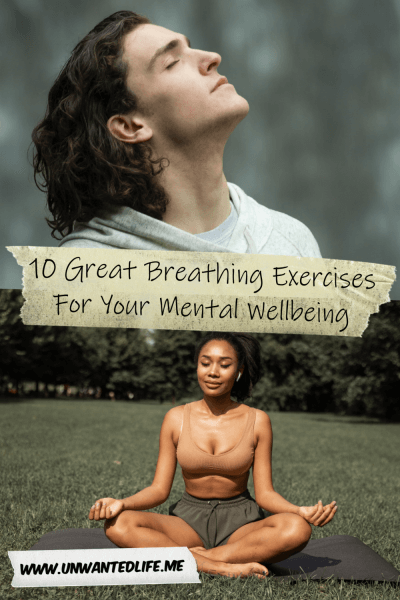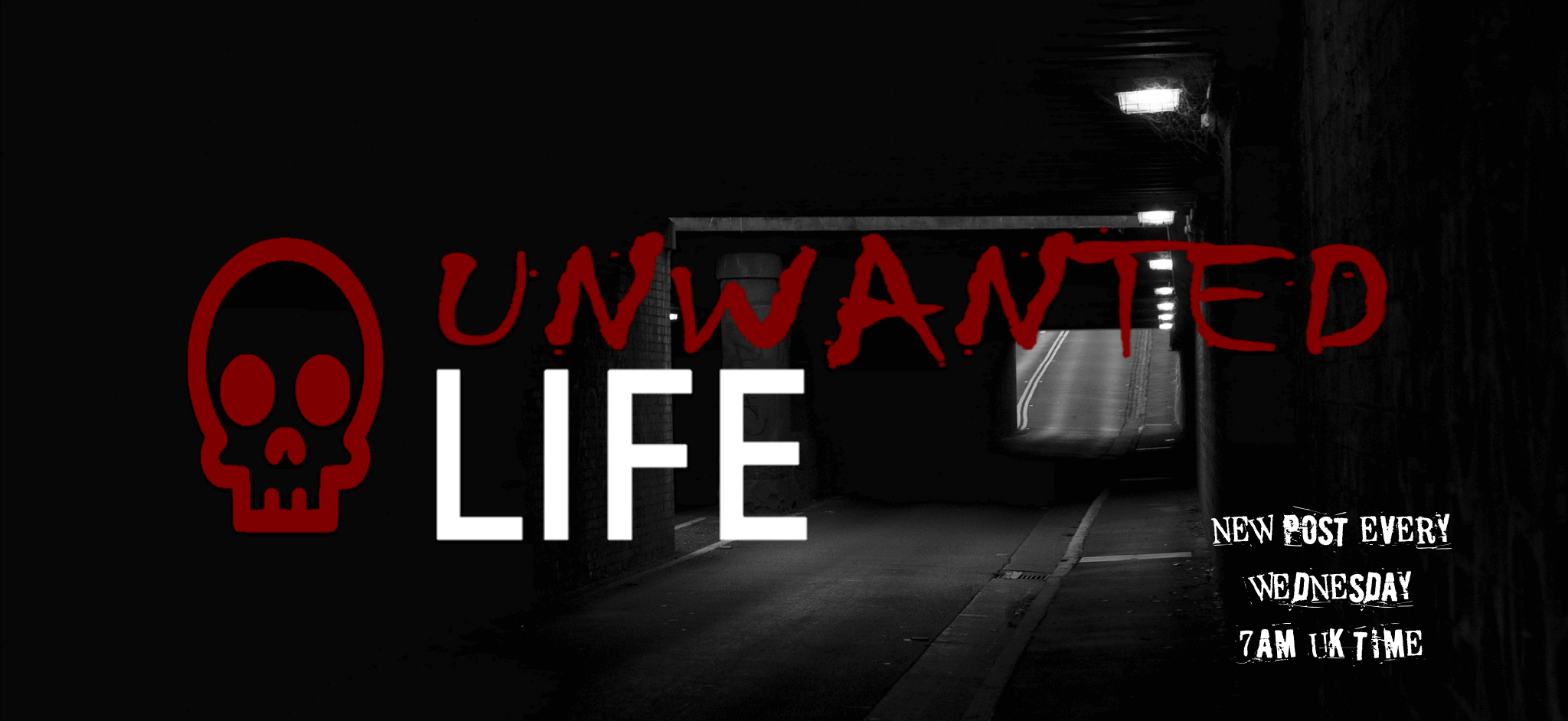Today I’m presenting you with a selection of breathing exercises that help manage anxiety, help you sleep, and help you feel calm. I figured it might be useful to provide a list of breathing exercises after writing ‘3 Beneficial Ways CBT-I Will Help With Your Insomnia‘, to help get the ball rolling with helping you sleep or to just unwinded.
Using breathing exercises is one of the oldest and most efficient ways of treating stress (Everly and Lating, 2013). Thus, using a combination of these breathing exercises each day for between 10-30 minutes will help you reduce stress, depression, and anxiety.
Breathing Exercises
Box breathing
This breathing exercise is defined by its four equal parts. For this breathing exercise, you’ll need to do:
- Breathe in for four seconds through the nose.
- Hold your breath for fours seconds.
- Breathe out through your mouth for four seconds.
- And hold for four seconds.
- Repeat as many times as needed.
4-7-8 breathing
The 4-7-8 breathing exercise is pretty straightforward, much like the box breathing exercise. All you need to do is:
- Breathe in through your nose for four seconds.
- Hold your breath for seven seconds.
- Breathe out through your mouth for eight seconds.
- Repeat this at least four times, or as necessary.
Deep Breathing
This one is a little more intense than the other breathing exercises. Here’s why:
- Breathe in deeply through your nose and try to feel your abdomen (you’ll see your stomach come out as your diaphragm moves down).
- Breathe out through your mouth and try to empty your lungs as much as possible.
- Try to breathe like this as slowly and deeply as you can.
- Repeat this a minimum of six times.
Long exhale, short inhale
This deep breathing exercise isn’t for everyone in every situation. One such situation is when you’re panic breathing during an anxiety attack, whereby deep breathing may cause you to hyperventilate instead. In such situations, this long exhale, short inhale breathing exercise might be better. All you need to do is:
- First breathe out and push all the air out of your lungs before you breathe in,
- Let your lungs do the work and breathe in normally.
- Now when you breathe out, try to breathe out for longer than you’ll breathe in. For example, if you breathe out for six seconds, you’ll breathe in for four seconds.
- Repeat this for a couple of minutes.
Quieting response
This method was suggested by Medical News Today, which combines deep breathing with visualisation. You do this by:
- Relaxing the muscles in your face and shoulders.
- Imagine you have holes in the soles of your feet.
- Take a deep breath and visualise the hot air coming in through the holes in the soles of your feet.
- Imagine the hot air travelling up through your legs, through your tummy, and into your lungs.
- Relax each muscle as the hot air passes through them.
- Breathe out slowly and imagine that the air is travelling from your lungs, back through your tummy, through your legs, and out through the holes in the soles of your feet.
- Repeat until you feel calm.
Belly breathing
This is a simple method that gets you to use your diaphragm to breathe. What you need to do is:
- Place one hand on your tummy just above your belly button and put the other hand on your chest.
- Breathe in through your nose so that your tummy rises, but your chest stays relatively still.
- Round your lips and breathe out through your mouth.
- At the end of the out breathe, engage your stomach muscles to help push the air out.
- Repeat three or four times, or as necessary.
Coherent breathing
Also known as resonance breathing, was shown to reduce depression during a 12 week yoga intervention for those with clinical depression (Streeter et al. 2017). All you need to do is:
- Lie down and close your eyes.
- With your mouth closed, gently breathe in through your nose for six seconds, but don’t try to fill your lungs.
- Gently breathe out through your nose for six seconds, but don’t force it.
- Repeat for 10 minutes.
- Then take a minute or two to focus on how your body feels.

Kapalbhati (Breath of fire)
This breathing exercise was used in a study by Bhimani, Kulkarni, Kowale, and Salvi (2011) to investigate if practicing Pranayama (of which this breathing exercise belongs) could help reduce stress levels, which they found it did. To try the breath of fire breathing exercise, all you need to do is:
- Sit in a meditative posture or a comfortably seated position.
- Close your eyes and relax the muscles in your body.
- Breath in deeply through your nose, expanding your chest.
- Breath out forcefully by contracting the abdominal muscles, then relax.
- Continue this breathing pattern of breathing in passively and breathing out forcefully six times.
- Then complete 30 rapid breath.
- Once you’ve finished your 30 rapid breaths, take a deep breath, then breathe out slowly.
- This is one round of Kapalbhati (breath of fire).
- Repeat two more times.
Simhasana (Lion’s breath)
This is another breathing exercise taken from Pranayama yoga. You’ll see how it got its name in a second. To do the lion’s breath, you need to:
- Get into a comfortable seated position on the floor, preferably a kneeling position if you’re able to.
- Lean forward slightly and put your hands on your knees or floor.
- Spread your fingers out.
- Breathe in through your nose.
- Open your mouth wide and stick your tongue out towards your chin.
- Breathe out forcefully while you vocalise the sound “ha”.
- Breathe normally for a while.
- Repeat this about seven times.
Alternate nostril breathing
The clues in the name, this is a breathing exercises that gets you to switch which nostril to breathe through. To do this breathing exercise, you need to:
- Place your left hand in your lap.
- Take the right hand and rest your index finger and middle finger between your eyebrows.
- Using your right thumb, cover your right nostril and breathe in slowly through your left nostril.
- Then take the ring finger on your right hand and use it to pinch your nose closed and hold your breath for five seconds.
- Keeping your right ring finger on your left nostril, remove your thumb from your right nostril and breathe out through your right nostril.
- Now breathe in slowly through your right nostril.
- Pinch your nose again and hold your breath for five seconds.
- Now open your left nostril and breathe out.
- Now repeat this cycle by breathing in through the left nostril.
- Repeat up to 10 times.
As always, leave your feedback in the comments section below. Also, feel free to share your experiences of using breathing exercises in the comments section below as well. Don’t forget to bookmark my site and if you want to stay up-to-date with my blog, then sign up for my newsletter below. Alternatively, get push notifications for new articles by clicking the red bell icon in the bottom right corner.
Lastly, if you’d like to support my blog, you can make a donation of any size below. Until next time, Unwanted Life readers.
References
Bhimani, N. T., Kulkarni, N. B., Kowale, A., & Salvi, S. (2011). Effect of pranayama on stress and cardiovascular autonomic tone and reactivity. Nat J Integ Res Med, 2, 48-54. Retrieved from https://europepmc.org/article/med/23362731 and https://njirm.pbworks.com/f/11Effect+of+Pranayama.pdf.
Everly, G., Jr., & Lating, J. (2013). Voluntary control of respiration patterns. A clinical guide to the treatment of the human stress response (pp. 223–235). Springer: New York. Retrieved from https://doi.org/10.1007/978-1-4614-5538-7_11 and https://link.springer.com/chapter/10.1007/978-1-4614-5538-7_11.
Jerath, R., Crawford, M. W., Barnes, V. A., & Harden, K. (2015). Self-regulation of breathing as a primary treatment for anxiety. Applied psychophysiology and biofeedback, 40(2), 107-115. Retrieved from https://doi.org/10.1007/s10484-015-9279-8 and https://philarchive.org/archive/RAVSOB.
Streeter, C. C., Gerbarg, P. L., Whitfield, T. H., Owen, L., Johnston, J., Silveri, M. M., Gensler, M., Faulkner, C. L., Mann, C., Wixted, M., Hernon, A. M., Nyer, M. B., Brown, E. R. P., & Jensen, J. E. (2017). Treatment of major depressive disorder with Iyengar yoga and coherent breathing: a randomized controlled dosing study. The Journal of Alternative and Complementary Medicine, 23(3), 201-207. Retrieved from https://doi.org/10.1089/acm.2016.0140 and https://www.liebertpub.com/doi/10.1089/acm.2016.0140.


I think breathing katas are also great. It helps you to relax and focus at the same time.
I don’t think I’ve heard of Katas before
A great selection of breathing exercises. I was doing them as I was reading your post. ?
Awesome
The deep breathing is what helps me if I am struggling in any situation, especially when I can feel a panic attack coming up or a very bad case of crying where I can almost not breath at all. I want to try some others of these breathing exercises. Thank you for sharing.
Thanks for sharing your experience, and I’m glad you have a breathing exercise that helps you in such situations
Great post! I know a lot of people swear by breathing exercises as ways to calm down or take a beat, but I’ve not tried them myself. Thank you for this helpful post
Breathing exercises aren’t for everyone, but it’s always worth giving them a try
OK before I read the rest of the alternate nostril breathing, I tried to do it and imagine I looked rather funny! I realise now that you use your hand to stop the other nostril! I find myself using box breathing mostly but would be interested to try the others here too. Thanks!
Yeah, you can look a little silly while doing that exercise with one hand, so you could do it with two to make it easier
great list to have all in one place! I love these breathing exercises I tried the nostrils one that was very calming. Will try the other ones too thanks!
I hope you find the rest calming as welll
This is such a helpful post that is full of detail and great suggestions. These are so helpful thank you for sharing.
Lauren – bournemouthgirl
Thanks
I think I’ve used all of these except the “holes in your feet” one at least a couple times over the last couple of years. in fact, I used a couple of them this morning when prepping for my job interview. Great post, thanks for sharing 🙂
Good luck with your interview
These are great breathing exercises. Some of these I have not tried before, so I’m definitely adding them to my list.
I hope you find the news ones beneficial
I will have to try belly breathing. I often take ten and have some deep breaths.
You’ll have to let me know how the belly breathing works out for you
This is a great, well researched post. I use alot of these with my yoga practice but earned some new ones!
Carley Creative Concepts
Thank you
Really really love this post. Myself and so many others will find this post super helpful. I have quite bad panic attacks so reading these breathing techniques are really helpful. Thank you so much for sharing Xo
Elle – ellegracedeveson.com
If you suffer from bad panic attacks, you might benefit for graded exposure, which I wrote an article about and which comes with a free workbook. It did wonders for my anxiety induced psychosis
Glad i came acorss your post. Here I am at work practicng my box ? breathing. These breathing exercises does help to buss the stress. Another great post, Unwated life
I’m glad they work for you ?
Breathing techniques are so useful and have worked well for me a number of times. There are few here I have yet to try so thank you for the information.
I hope you find the new ones useful
thanks for sharing these strategies and techniques, some are new to me and i’m so excited to try them out. love your work, glad i came across your page.
Hope you find the news ones beneficial
This was such a interesting read! I had no idea there were so many different techniques of breathing! Thank you for sharing x
Thanks for commenting
I loved this. I tried a few as I was going along!
I hope you like the ones you tried
I’ve just had a quick try of the alternative nostril breathing, and it is actually surprisingly relaxing. I’m surprised as I normally have not being able to breath out of one nostril, as it reminds me of having a cold. Interesting read 🙂
I hadn’t made that connection before, but I can certainly see it now
As I’m reading the exercise, I’m doing it as well. It’s fun and relaxing. Definitely great for a busy day. Thanks for sharing this! Super interesting.
Thanks for commenting
Oh wow! I’m loving all of these! I’ve only ever heard of the 4-7-8 technique and didn’t know there were so many exercises, pretty neat. Thank you for such a useful post!
I hope you find the other exercises useful
Some great tips here.
I want to try some breathing exercises soon, to add to my list of tools for managing anxiety.
Will save this and give them a go 🙂
I hope they help
Breathing exercises are very important for the mental health. I never knew that there are different types of breathing exercises. I practice the deep breathing a lot and it’s amazing! It helps me relax and just calm down. Thank you for sharing x
Thanks for sharing
Thanks for sharing! I use to practice breathing exercises so much in yoga but have been out of practice for the past year and a half. Looking forward to taking it up again 🙂
Will you also be taking yoga back up?
I really would love to, I was doing Bikram Yoga once a week and I always felt amazing afterwards!
Sounds like it’d be worth picking up again, even if it’s not every week
These are great breathing exercises. I was quite surprised because there are some of them which I have never heard of and I was actually researching them on another tab as I was reading haha.
I had a stress coping skills class where I learned a lot of different techniques which has helped me, these are some new ones that I just learned. I love this.
I’m glad I was able to introduce you to some new breathing exercises
The 4-7-8 breathing exercise I learned during the beginning of the Pandemic. It would help me so much every time I would feel stressed out.
That’s great that it’s been helping you with your stress
The first time I tried breathing exercises in combination with a few yoga stretches, I was surprised at how actually sitting and breathing deeply and intentionally is different from the breathing we do on autopilot all day! It was refreshing and challenging to try a handful of different methods, including the breath of fire and box breathing.
Thanks for sharing!
Thank you for sharing your experience
breath work always puts me at ease
Thanks for commenting
Thanks for sharing! This sounds very beneficial.
Thanks for commenting
So pleased to read all these breathing exercises especially breathing exercises through yoga are so effective, the lagst one is called Anulom- vilom which requires alternate nostril breathing. 4-7-8 technique is really effective as it calms down and help you to think calmly.
I will try coherent breathing and box breathing as these are new for me, thanks for spreading so awareness and the emphasis on yoga is so important.
Thanks for sharing your insights
I have started doing breathing exercises during my yoga session and truly it had done wonders for my anxiety. But I never knew there were so many other techniques out there too! Thanks for sharing!
Thank you for sharing your experience
What a great post! Breathing exercises are amazing. I do a number of the ones you’ve described through my yoga practice. And now I have more to try. Thanks for sharing,
I’m glad I was able to introduce your to a few more to try out
I love to try belly breathing. I think its the easy one
Thanks for commenting
Ohhhh great article! I also like the wim hoff method!
Thank you
This is such an informative post, I’ll definitely be trying these breathing exercises
I hope you like them
I liked the breathing techniques you have here. Thank you for sharing this information with us. Great post.
Thanks for reading
I’d never heard or some of these, I’m only used to deep breathing and box breathing, I did try each exercise as I was reading, thank you for sharing these exercises, they’ll help so many!
I hope you liked the ones you tried